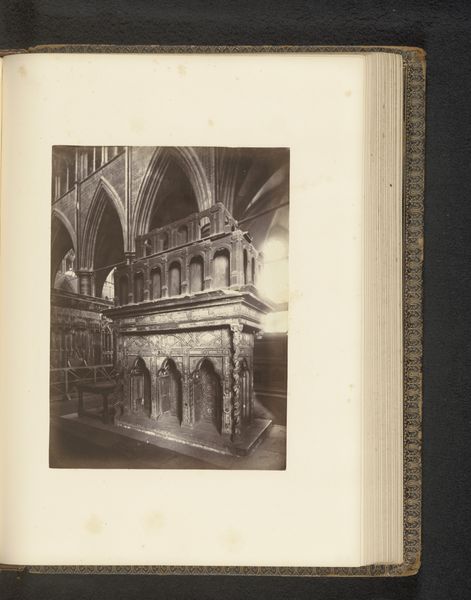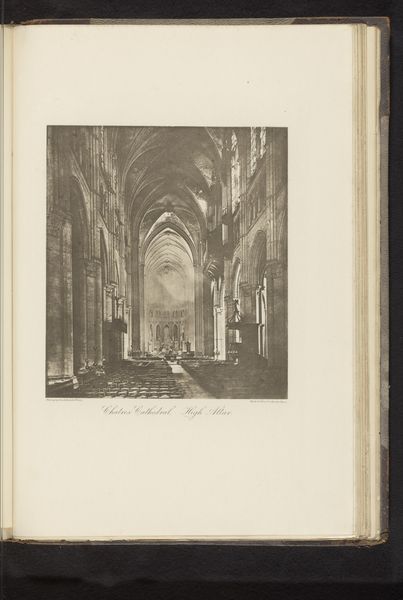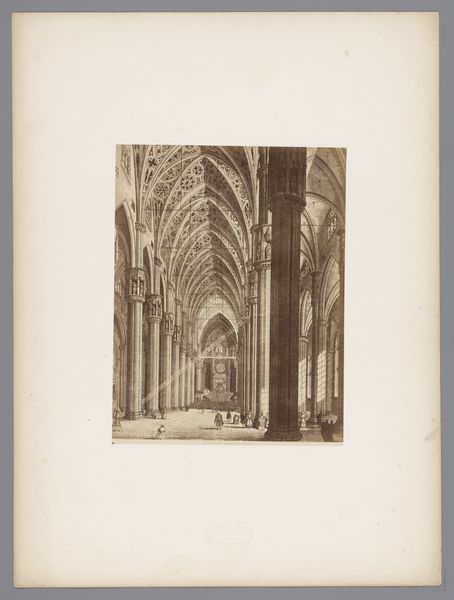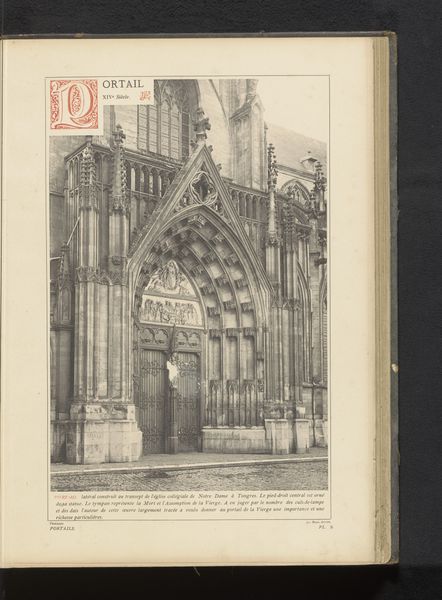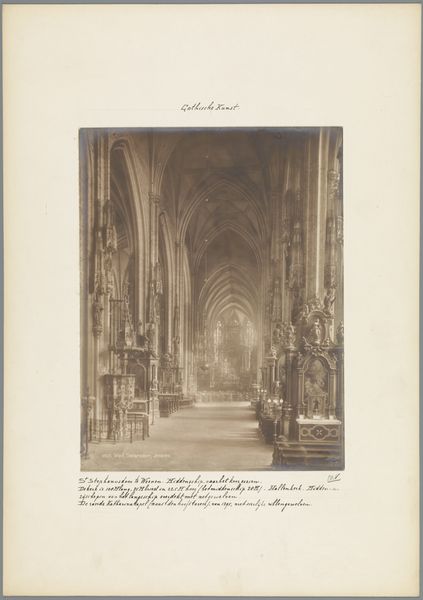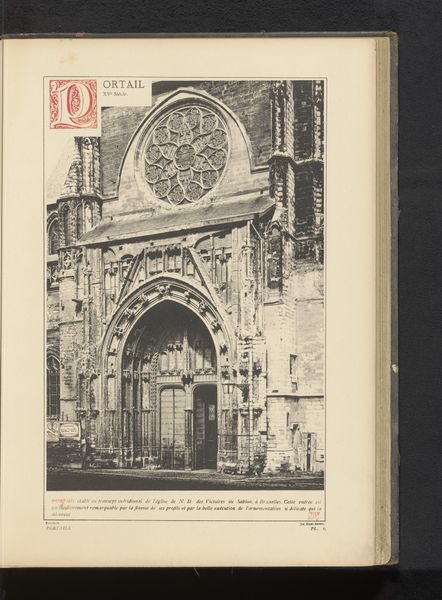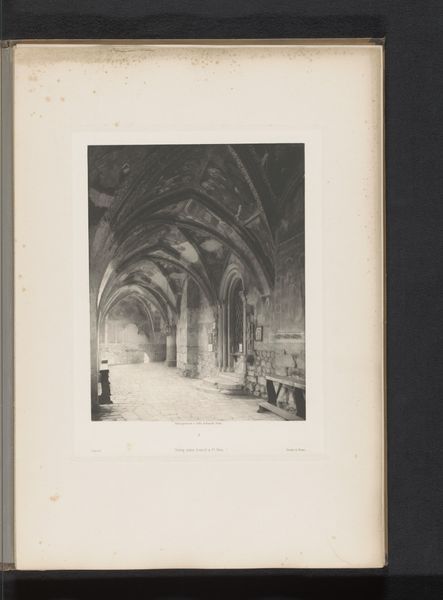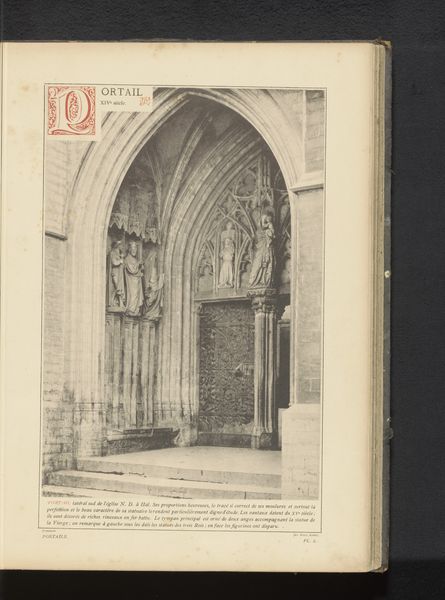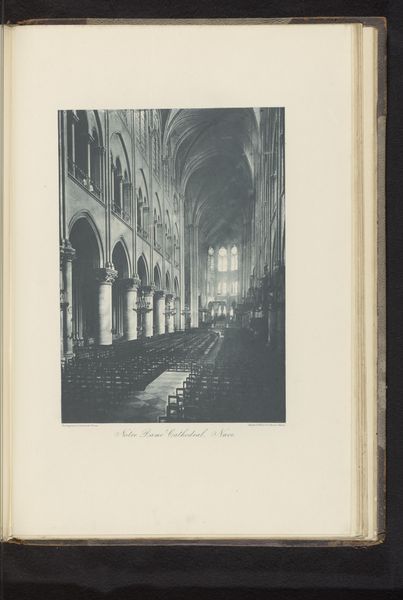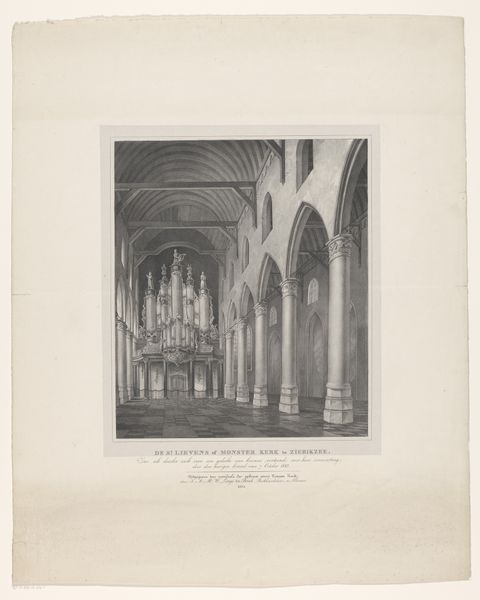
Dimensions: height 255 mm, width 196 mm
Copyright: Rijks Museum: Open Domain
Curator: This is an early photographic print, likely from before 1886, depicting the principal entrance of St. Patrick's Cathedral in New York. It's fascinating to consider how architecture like this becomes a symbol. Editor: It has an imposing presence. The dark entrance pulls the eye, and all those details overhead, the arches and the spires—it almost feels suffocating. A little overwhelming in its verticality and ornateness, maybe? Curator: Overwhelming, yes, but perhaps deliberately so. Consider the socio-political context. Churches, and specifically cathedrals like St. Patrick's, were expressions of power, dominance, and the visible presence of the Catholic Church in a rapidly changing, often hostile urban environment with significant waves of immigrants from many nations and social strata. Editor: From a formalist perspective, notice how the photographer captured the almost obsessive symmetry of the facade. The balanced repetition creates a powerful visual rhythm—the pointed arches reaching upward are mirrored precisely on either side. It gives a sense of stability. Curator: Absolutely. That calculated symmetry acts as a visual reinforcement of a rigid social and religious hierarchy. But that rigid form served to consolidate communal identities in the late 19th Century when questions of belonging became prominent. Editor: Do you think the photographer was consciously trying to portray that rigidity, or was it simply capturing the aesthetics of Neoclassicism in this built environment? There's a detached, almost clinical feel to the image; like a document of architectural design. Curator: Well, every image, no matter how "objective" it seems, has a maker with a perspective and biases. Photography in that period played a crucial role in shaping the collective perception and legacy of landmark structures like St. Patrick's, so this documentation has to be viewed alongside its social role. Editor: An intriguing blend of structure, light, and cultural baggage captured here. Curator: It reminds us how buildings too function as complex texts to be read and analyzed in light of the cultural narratives in play at the time they came into being.
Comments
No comments
Be the first to comment and join the conversation on the ultimate creative platform.
